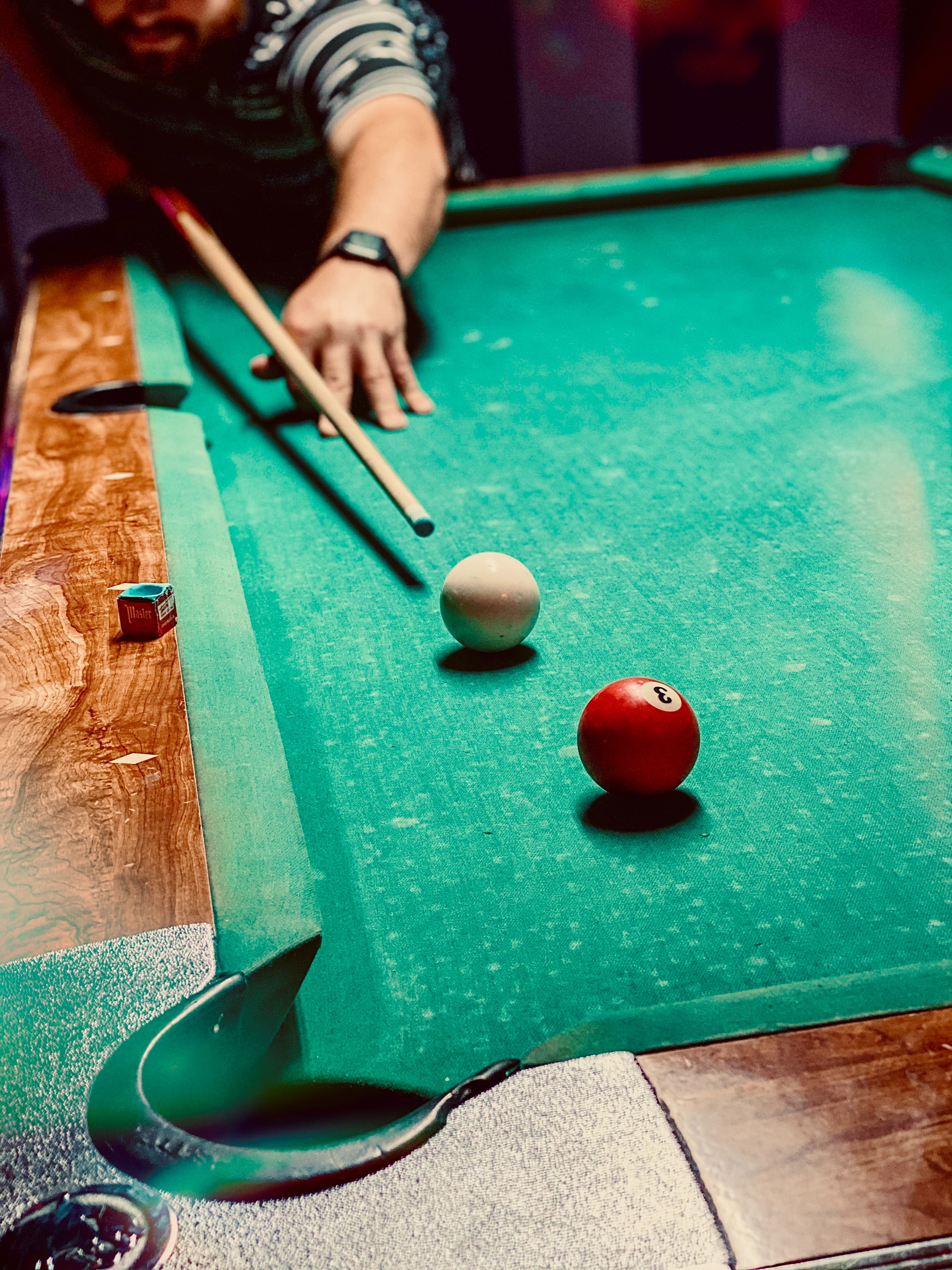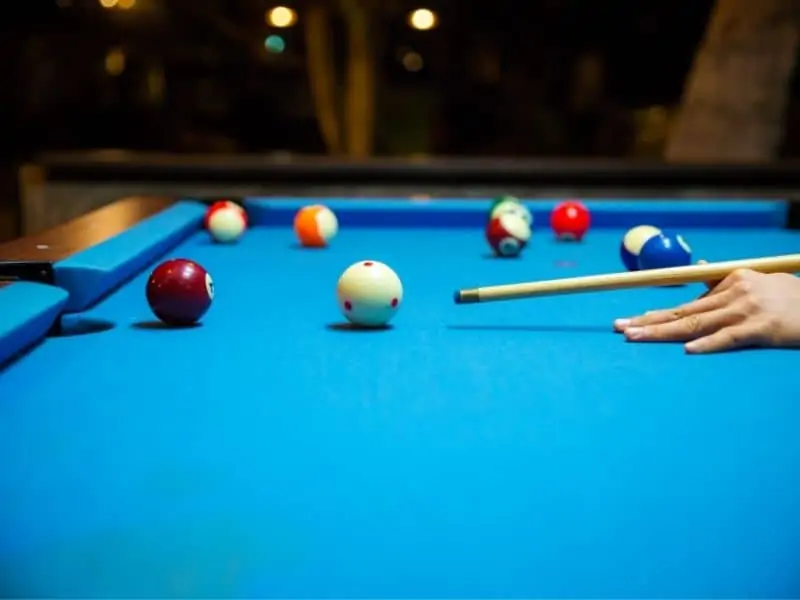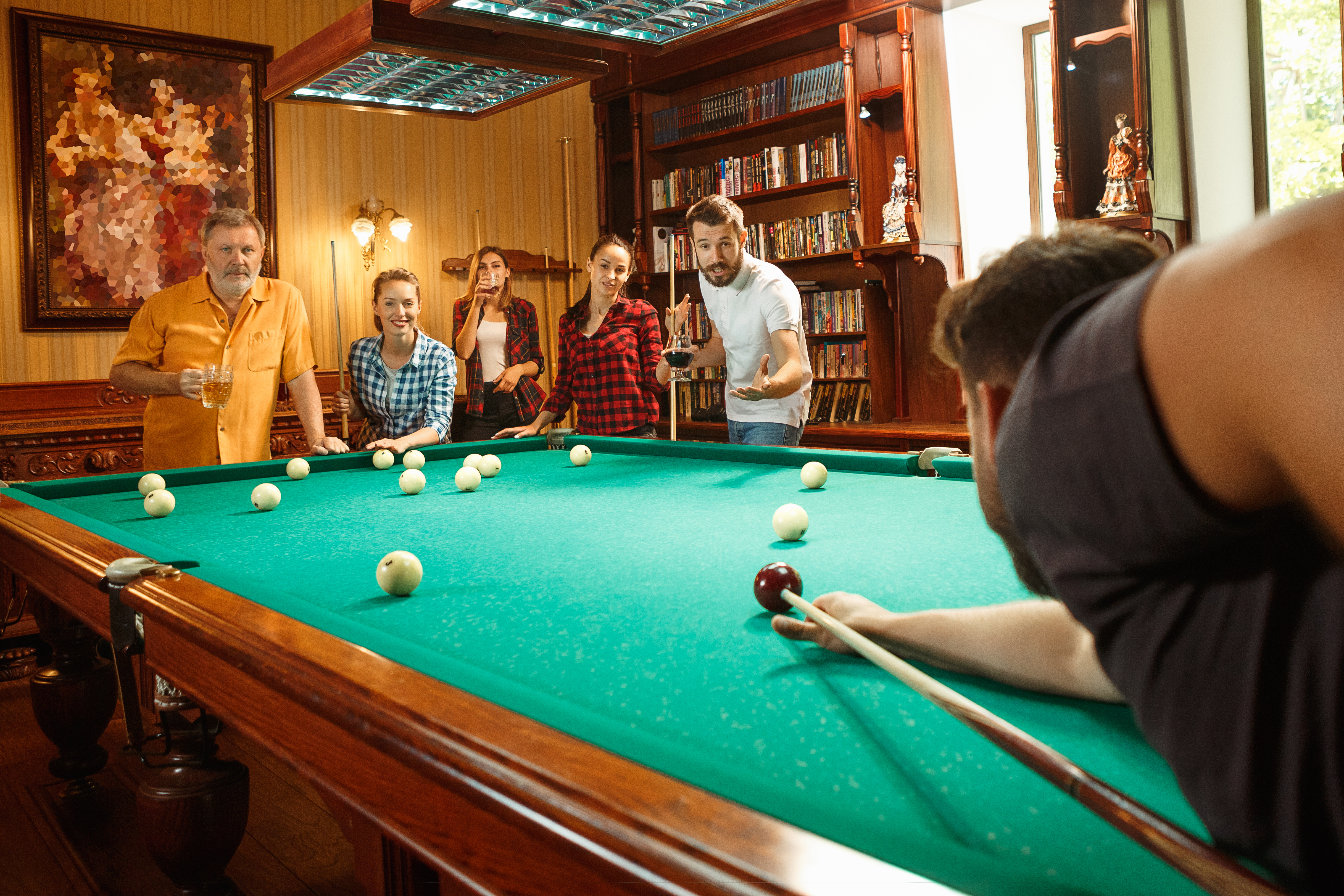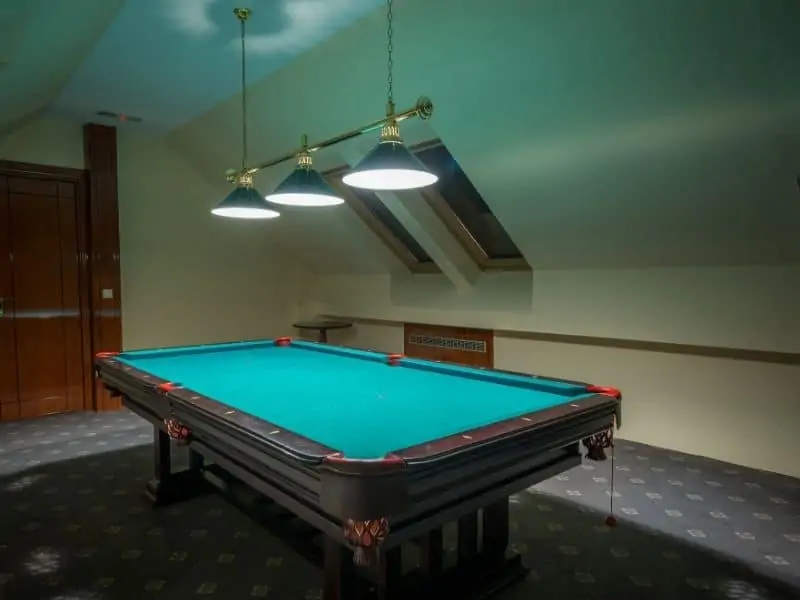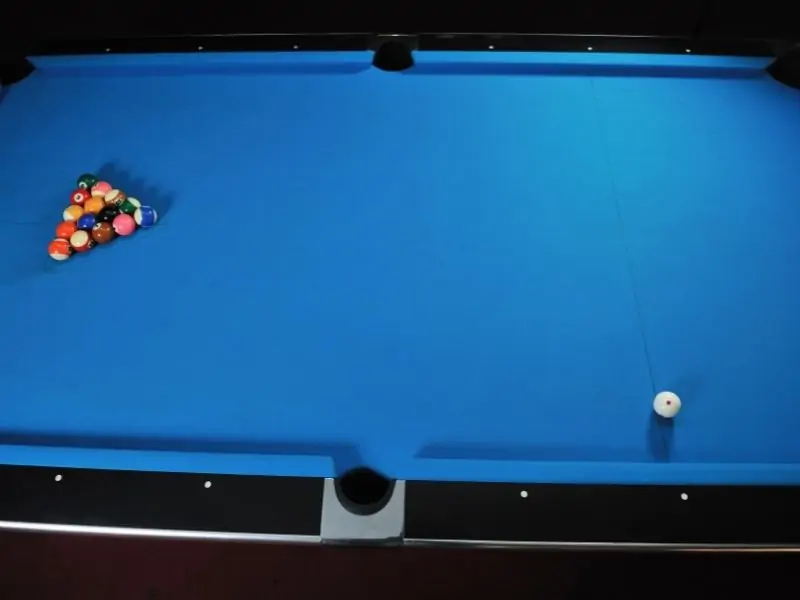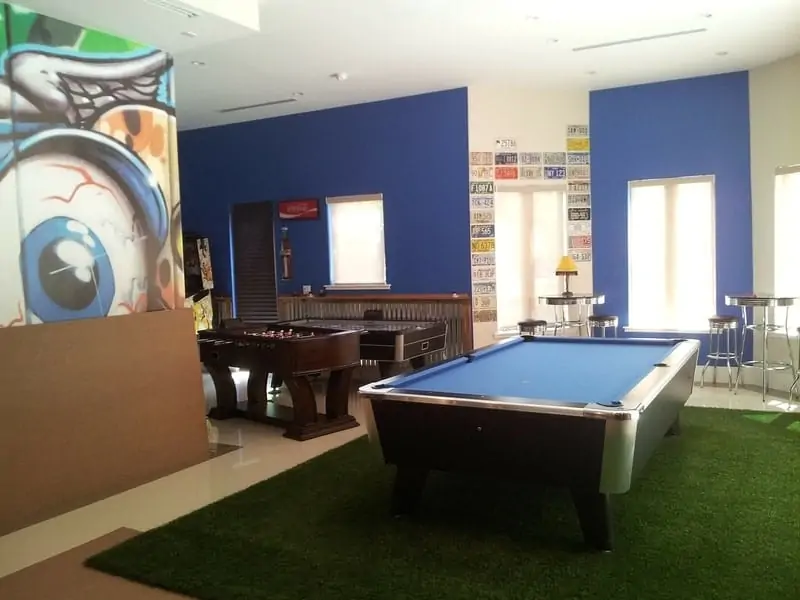Fully assembled pool tables are incredibly heavy and hard to move. Most doorways won’t admit a pool table standing on its legs. However, if you’re contemplating moving a pool table, it may be tempting to pay it on its side in order to try and fit it through a doorway. The begs the question, can you turn a pool table on its side?
The answer to this question depends on the type of pool table. Most pool tables should never be turned on their sides because doing so can damage the frame, rails, pockets, and slate. However, some lightweight wood or MDF pool tables can be turned on their sides safely and easily.
Read on to find out all about turning a pool table on its side.
Can You Turn a Slate Bed Pool Table on its Side?
The most common types of pool tables use slate (stone) as the playing surface underneath the felt. This is one reason why pool tables are incredibly heavy. The piece(s) of slate alone can weigh 500 pounds or more.
This is why it’s never a good idea to turn a slate pool table on its side. If you do, most of the slate’s weight is then resting on the side of the table. The rails and wood around the playing surface are not designed to take that much weight, so any time you turn a slate table on its side, you’ll risk damaging or outright breaking the wood railings.
You can also damage the legs by turning a slate bed table on its side. If you allow the turned table to rest at an angle so the legs are taking the bulk of the weight, they could easily break.
The legs of a pool table are designed to hold the weight of the table vertically. When a table is placed on its side, the weight of the slate is pushing on the legs at an angle, which can cause them to crack, break, or degrade quickly.
The only possible exceptions to this rule are coin-operated tables.
Coin-Operated Tables

Many coin-operated tables can be moved on their sides— only after you take the feet off. These types of tables are incredibly hard to disassemble, have single-piece slates, and were designed to move with a large furniture dolly.
However, you’ll always want to check with the manufacturer for exact moving instructions before you start, every table is different.
For most coin-operated tables, you can prop one side up at a time and unscrew the feet so they don’t break off when you put the table on its side. The legs themselves can usually stay put. Once you have the feet off, you’ll need some help turning the table on its side and getting it on a furniture dolly.
How to Move and Store a Slate Bed Table
For other slate tables, moving is all about disassembly. You can take the table apart where it stands, transport the parts to the new location, and then reassemble it. This is how professional pool table movers do it.
Once you have the table disassembled and the slate separated, you can place the stone on its side for storage. Just be aware that doing this on carpet will put a permanent dent into the carpet.
If you want to turn the table on its side for storage or to fix something— don’t. Not unless you take it apart. Placing a fully-assembled table on its side even for a few minutes can cause expensive damage to the table. If you’re not sure how to fix something, consult a pool table mechanic.
As for storage, you can either store a table fully assembled on its feet, or fully disassembled. There’s no other ideal way to store a pool table.
Note: Never store or transport a slate table upside-down!
Can You Turn an MDF Bed Pool Table on its Side?
MDF tables are much lighter than slate bed pool tables. As such, they’re easier to handle. Some of these tables are even designed to be stored on their sides, while others should be treated just like slate tables. Let’s take a look at the different kinds and which ones can be turned on their sides.
Different Kinds of MDF Pool Tables
Before we dive in, I’d like to say that the best way to move any pool table is to consult the owner’s manual that comes with the pool table, if possible. There are so many different types of MDF tables from so many different manufacturers that it’s always best to get as specific as possible.
“Regular” MDF Pool Tables
What I mean by “regular” is that the pool table is identical to a slate tablet, but it’s made from medium-density fiberboard instead, like this one from Hathaway. These tables are generally 7 or 8-feet in size and weigh around 200 to 400 pounds total.
If you can help it, avoid turning one of these tables on its side, unless the owner’s manual says otherwise. They’re usually heavy enough that you risk damaging them by turning them on their sides.
Foldable MDF Tables
There are several “portable” or “foldable” MDF pool tables on the market. Although they don’t play like a slate table, they are ideal space-saving tables and they’re great for kids. These tables can be turned on their sides. Some of them need to be placed upside-down to fold the legs down.
Here’s a foldable 5.5-foot table from Rack Pool Tables. It’s only 82 pounds, making it very easy to move and quick to set up or break down.
Conclusion
As you can see, most home pool tables should never be turned on their sides. Slate tables can become seriously damaged when turned or moved while fully-assembled. Many MDF tables, like those identical to slate tables, shouldn’t be placed on their sides, either, although the risk of damage is slightly less because of their reduced weight.
Foldable or portable tables are designed to be placed on their sides easily. There are many such options on the market for casual players or kids.
In general, consult the table’s owner’s manual if possible. If you don’t have the manual handy, you may be able to find a PDF version for free online.
Other Articles You May Be Interested In
- How to Move a Pool Table a Few Feet
- How to Move a Pool Table: A Complete Guide
- How Much Does it Cost to Move a Pool Table?
- Can You Move a Pool Table Without Taking it Apart?
- Are Pool Tables Too Heavy for the Second Floor?

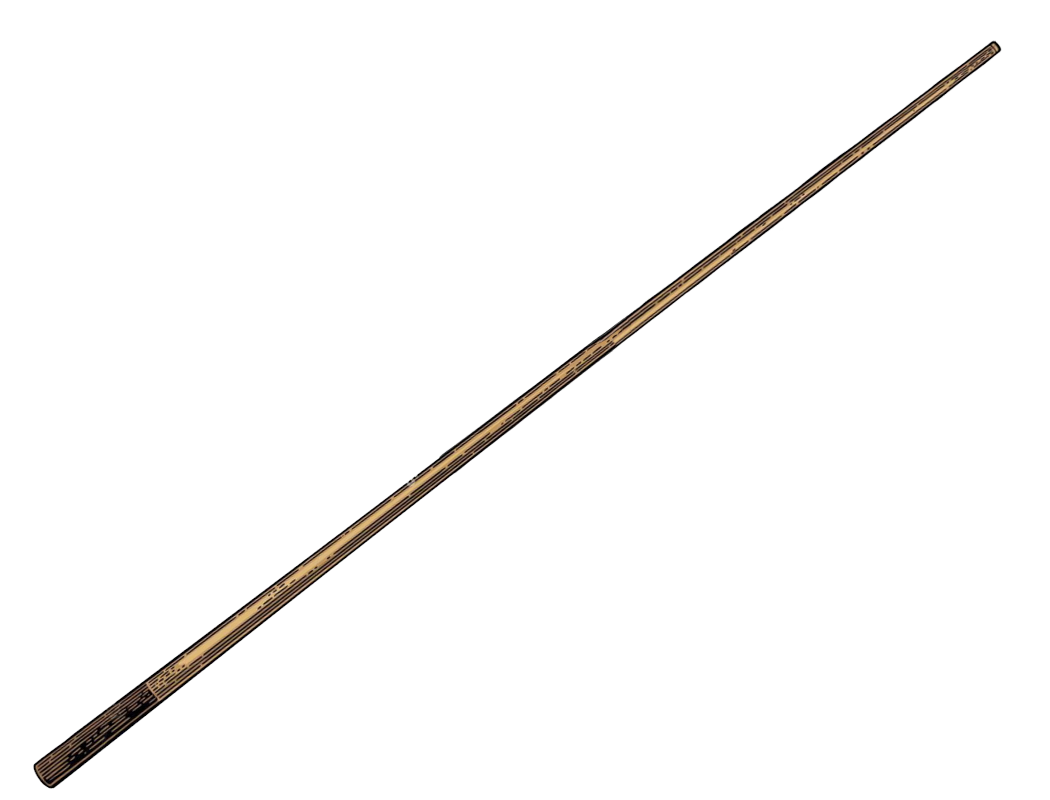


.webp)
